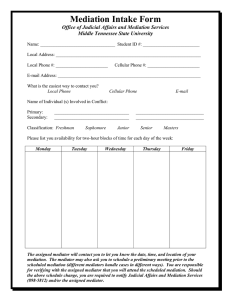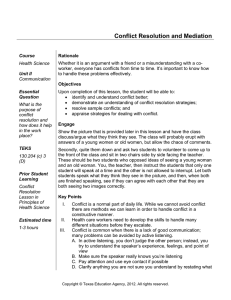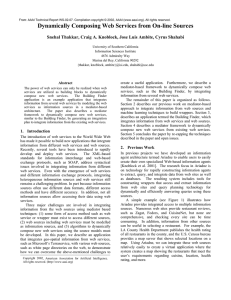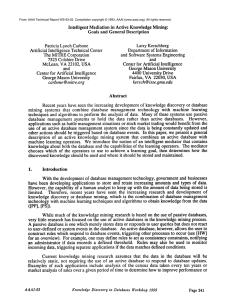3. mediation. Distribute the following "Steps for Mediation" and ask students to
advertisement
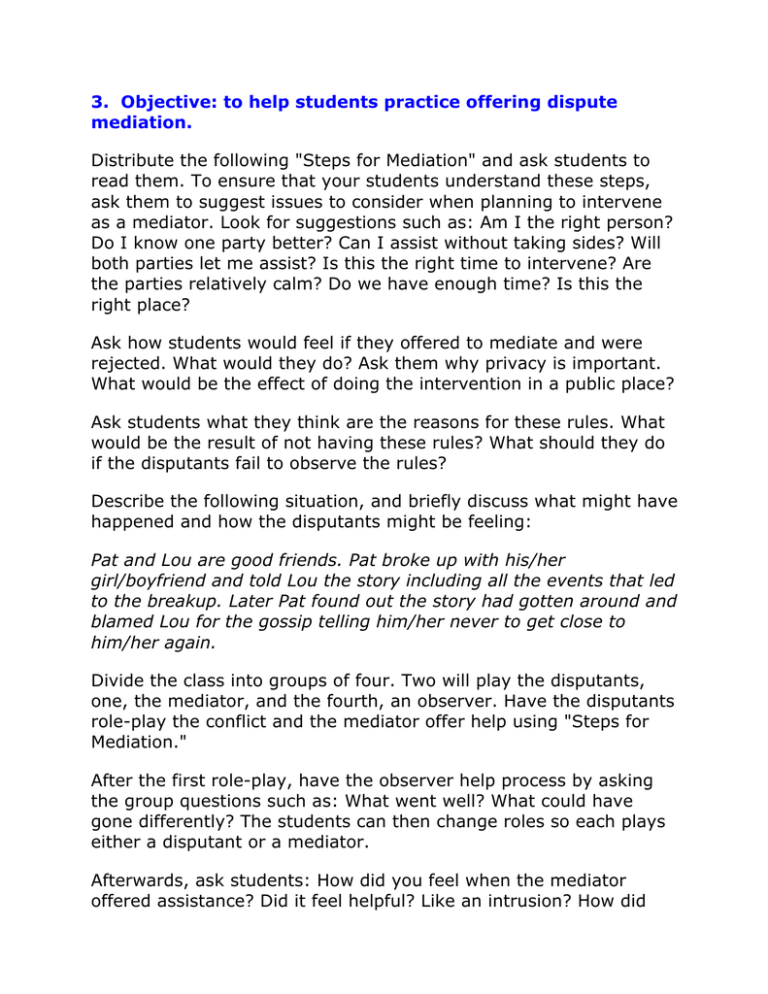
3. Objective: to help students practice offering dispute mediation. Distribute the following "Steps for Mediation" and ask students to read them. To ensure that your students understand these steps, ask them to suggest issues to consider when planning to intervene as a mediator. Look for suggestions such as: Am I the right person? Do I know one party better? Can I assist without taking sides? Will both parties let me assist? Is this the right time to intervene? Are the parties relatively calm? Do we have enough time? Is this the right place? Ask how students would feel if they offered to mediate and were rejected. What would they do? Ask them why privacy is important. What would be the effect of doing the intervention in a public place? Ask students what they think are the reasons for these rules. What would be the result of not having these rules? What should they do if the disputants fail to observe the rules? Describe the following situation, and briefly discuss what might have happened and how the disputants might be feeling: Pat and Lou are good friends. Pat broke up with his/her girl/boyfriend and told Lou the story including all the events that led to the breakup. Later Pat found out the story had gotten around and blamed Lou for the gossip telling him/her never to get close to him/her again. Divide the class into groups of four. Two will play the disputants, one, the mediator, and the fourth, an observer. Have the disputants role-play the conflict and the mediator offer help using "Steps for Mediation." After the first role-play, have the observer help process by asking the group questions such as: What went well? What could have gone differently? The students can then change roles so each plays either a disputant or a mediator. Afterwards, ask students: How did you feel when the mediator offered assistance? Did it feel helpful? Like an intrusion? How did you feel when you offered mediation? Can you imagine yourself offering to mediate a dispute in your family? Among friends? Have you ever done that?
